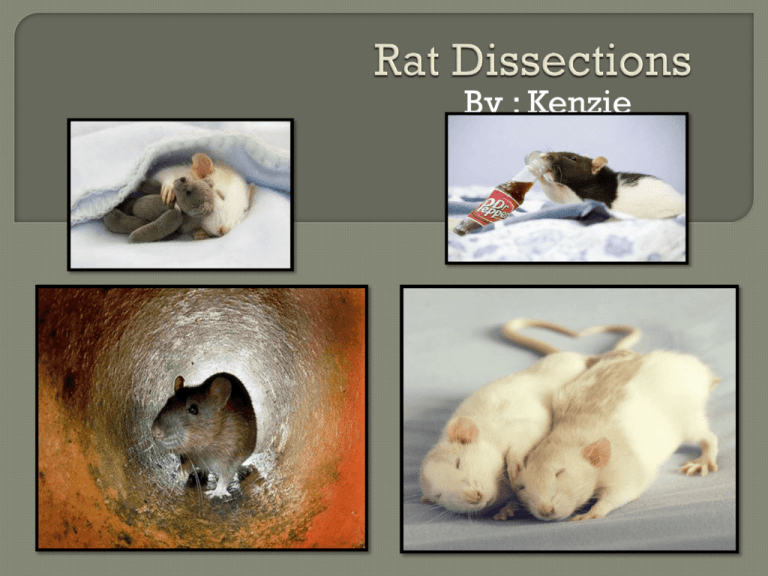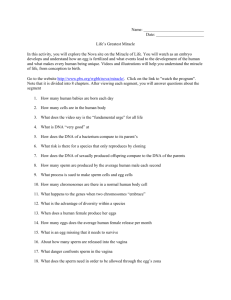Rat Dissections by kenzie
advertisement

By : Kenzie Respiratory System: The System that allows you to Breathe. Rat Lungs Reproductive System: The system that allows you To reproduce. Male Rat Lungs Mouth and Nose: Entrance contains mucus and nose hairs to catch bacteria. Nasal Spectrum: Divides nasal cavities from left to right sides. Pharynx: Throat, common passage way for air and food. Epiglottis: The flap of skin that covers either the trachea or esophagus for protection. Larynx: Voice box Trachea: Wind pipe. Bronchi: The lower end of the trachea that splits it between traveling right and left. Bronchial tube: Cartilaginous Rings. Bronchioles: Thinner walls with smooth muscle, a simple subdivision of the bronchi. Alveoli: This is where the exchange of oxygen and carbon dioxide entering the capillaries. Lungs: Where the oxygen enters. Right lung: Larger and shorter. Left lung: Smaller and has two lobes. Diaphragm: Pushes the oxygen out of your lungs when it becomes useless as carbon dioxide. Male: • • • • • • • • • • • • • Sperm: male reproductive cell Testes: Creates testosterone and sperm Semen: White milky liquid Penis: The organ in which sperm and urine comes out. Scrotum: Sac of skin that contains the testes. Vas deferens: Tubes that allow sperm to travel out. Urethra: Tube that carries urine. Seminal vesicles: Secretes an alkaline fluid. Prostate gland: A gland located in the neck of the urethra. Epididymis: Carries sperm out. Bladder: Holds urine Ureter: Something that carries the urine from the kidney to the bladder. Ejaculatory duct: Where the sperm ejaculates out of. Female: • Ovaries: Create the eggs. • Fallopian tubes: Carry the egg down into the uterus. • Uterus: holds the egg until it is fertilized, if not fertilized then it exits the woman, called her period. A fertilized egg has a specific term which is a zygote. • Cervix: Where acid is held, this is where many of the sperm get attacked. • Vaginal Canal: Where sexual intercourse takes place, here if the man ejaculates many of the sperm die instantly thanks to the vaginal acidity. There are three trimesters within a woman's pregnancy. Trimester one: Mitosis takes place. Formation of sack and the placenta take place. The cells formed are the Central Nervous System, the Digestive System, and the Integumentary System. Trimester two: The babies tissues are created. The skeletal system begins to develop. As well as the possibility of hearing the heart beat. Trimester three: This is where the organs become fully developed. This is their “preparation for the world” stages. http://quizlet.com/225319/respiratory- system-parts-functions-movements-andbreathing-control-flash-cards/ http://quizlet.com/1012618/malereproductive-system-flash-cards/ Notes






